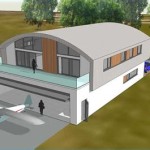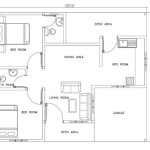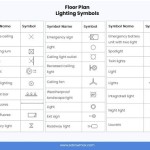The White House Basement Floor Plan: Unveiling the Subterranean World
The White House, a symbol of American power and history, is more than just the iconic facade we see on television. Deep beneath the manicured lawns and stately rooms lies a sprawling basement, a less-publicized yet crucial component of the presidential residence and executive branch. Understanding the floor plan of the White House basement provides insight into the operational and historical significance of this subterranean space.
While exact floor plans are not readily available to the public for security reasons, a general understanding of the basement's layout can be gleaned from historical records, media reports, and architectural analyses. The basement spans a considerable area beneath the main structure, housing a variety of facilities that contribute to the smooth functioning of the White House and the well-being of its occupants.
The initial construction of the White House did not include a fully developed basement in the modern sense. Early designs focused primarily on the ground and main floors. Over time, as the needs of the presidency and the White House staff evolved, the basement was expanded and adapted to accommodate new technologies and operational requirements. Significant renovations and additions throughout the 20th century have shaped the basement into its current form.
The White House Historical Association provides some details on the history of the basement, noting how it has served different purposes throughout the years. Initially, it was largely used for storage and mechanical systems. As technology advanced, the basement became home to more sophisticated infrastructure, including communication systems and security equipment. Today, it performs a diverse range of functions essential to the daily operation of the White House.
Key Point 1: Operational Infrastructure and Support Services
The basement of the White House is primarily dedicated to housing essential operational infrastructure and providing support services. This includes, but is not limited to, electrical systems, plumbing, heating, ventilation, and air conditioning (HVAC). These systems are crucial for maintaining a comfortable and secure environment within the White House. The complexity of these systems necessitates a dedicated space for their operation and maintenance.
The advanced communication systems housed in the basement are vital for presidential communication, both domestic and international. These systems ensure secure and reliable communication channels for the President and their staff, enabling them to conduct government business effectively. The redundancy and security measures implemented in these systems are paramount to national security.
Furthermore, the basement contains storage areas for various supplies and equipment needed for the White House's daily operation. These areas are essential for maintaining an adequate inventory of necessary items, ranging from office supplies to catering equipment. Efficient organization and inventory management are crucial in ensuring the smooth operation of the White House.
The basement also houses laundry facilities, which service the residential needs of the First Family and the operational requirements of the White House staff. Professional laundry services are essential for maintaining the appearance and hygiene standards of the White House. These facilities are equipped with industrial-grade washing machines and dryers to handle the large volume of laundry generated by the White House.
In addition to these core operational functions, the basement includes workshops and maintenance areas for skilled tradespeople. These areas are essential for performing repairs and maintenance on the building's infrastructure and equipment. The presence of these workshops allows for quick and efficient responses to maintenance requests, minimizing disruptions to the White House's operations.
Key Point 2: Historical Spaces and Recreational Facilities
Beyond its operational functions, the White House basement also contains spaces with historical significance and recreational facilities for the use of the President, their family, and White House staff. These areas provide a glimpse into the personal lives of the individuals who have resided in the White House and offer a respite from the demanding pressures of their roles.
One notable feature is the White House bowling alley, which was originally installed by President Harry S. Truman in 1947. While it has been renovated and modernized over the years, the bowling alley remains a popular recreational facility for the First Family and their guests. It serves as a reminder of the lighter side of presidential life and offers a space for relaxation and camaraderie.
The basement also houses the White House Chocolate Shop, a dedicated space for creating confectionery treats for official events and personal enjoyment. The White House pastry chefs use this space to craft elaborate cakes, chocolates, and other desserts for state dinners, holiday celebrations, and other special occasions. The Chocolate Shop is a testament to the culinary artistry that takes place within the White House.
Another historically significant space is the dentist's office, which has been a feature of the White House basement for many years. This facility ensures that the President and their family have access to immediate dental care without having to leave the White House grounds. The presence of a dentist's office underscores the attention paid to the health and well-being of the President and their family.
While specific details about other recreational facilities may be limited, it is understood that the basement may also contain spaces for exercise and relaxation. These facilities are designed to provide the President and their staff with opportunities to maintain their physical and mental well-being amidst the pressures of their demanding jobs. The presence of these facilities reflects the importance of work-life balance even within the confines of the White House.
Key Point 3: Security and Emergency Preparedness
Security and emergency preparedness are paramount concerns within the White House, and the basement plays a crucial role in ensuring the safety and well-being of the President, their family, and the White House staff. The basement houses a variety of security systems and emergency response facilities designed to mitigate potential threats and ensure the continuity of government operations.
The White House Situation Room, while partially located on the ground floor, extends into the basement and is a highly secure communication and intelligence hub used by the President and their national security advisors. The Situation Room is equipped with advanced communication equipment and secure data links that allow the President to monitor global events and make critical decisions in real-time. The security protocols and technological infrastructure within the Situation Room are of the highest caliber.
The basement also contains secure communication centers that are used for confidential conversations and secure data transmission. These centers are shielded from electronic eavesdropping and are used for sensitive discussions that require the utmost discretion. The security measures implemented in these communication centers are essential for protecting classified information.
In the event of an emergency, the White House basement serves as a potential shelter for the President, their family, and key members of the White House staff. Reinforced areas within the basement are designed to withstand various threats, including explosions and chemical attacks. The presence of these shelters ensures the survival and continued operation of the executive branch in the face of adversity.
Emergency power generators are also located in the basement, providing backup power in the event of a power outage. These generators are essential for maintaining critical operations and ensuring the continued functioning of essential systems within the White House. Regular maintenance and testing of these generators are crucial for ensuring their reliability in emergency situations.
The integration of these security and emergency preparedness measures within the White House basement reflects the constant vigilance and dedication to protecting the President, their family, and the continuity of government operations. The subterranean nature of the basement provides an added layer of security and protection against potential threats.
In conclusion, the White House basement floor plan, while not fully disclosed, reveals a complex and multifaceted space that supports the operational, recreational, and security needs of the presidency. It serves as a vital hub for infrastructure, communication, and emergency preparedness, contributing significantly to the overall functioning of the White House and the executive branch. The historical evolution of the basement reflects the changing needs of the presidency and the ongoing efforts to maintain the White House as a secure and functional residence and office for the President of the United States.

White House Basement Learn About Its History Uses

Sub Basements White House Museum Basement Plans

Sub Basements White House Museum Usa Plans Dc
Photos Show The White House Interior Where Naomi Biden Got Married

White House Basement Learn About Its History Uses

The White House Archisyllogy

White House Data Photos Plans Wikiarquitectura

Inspired By The White House Plan 106 1206 6 Bedrooms

Floor Plan White House Tour Dc Interior

King White House Floor Plan Ayanahouse








